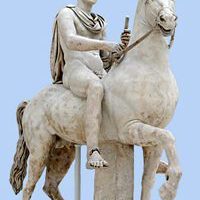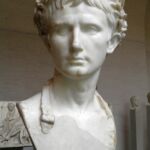Equites were a middle-class social class that included merchants, entrepreneurs, and bankers. Equity estates had to be at least 400,000 sesterces. The name of this state is derived from the word “horse” (equus).
The symbols of belonging to the equestrian state were owning a horse, wearing a golden ring and a narrow purple trail adorning the tunic (trabea). In the theatre, they took their place right behind the senators. Equites were a kind of knighthood (ordo equester) and took part in the annual horsemen parade held on July 15.
Initially, this term was used to describe Roman citizens who could afford to buy and maintain a horse and rider’s equipment, which was much more expensive than the equipment of a walker. They came from elite cavalry units in the legions, called centuriae equitum. This is where the name of this state can come from. Thanks to their merits in conquest, they gradually gained more and more influence and privileges, thanks to which they later distinguished themselves as a social group. They recruited from 3 tribus: Tities, Ramnes and Luceres. The equites were led by tribunus celerum. A hundred equites constituted a centuria, divided into subdivisions called decuriae, of ten people. Each of them was under the command of the decurio.
In the 3rd century BCE, the military function of the equites was blurred, but they remained as an influential and wealthy group of landowners and entrepreneurs. They fought for influence in the state by competing with senators and the aristocracy. It was mainly because of them that the books were published in 218 BCE. the lex Claudia law, forbade members of senatorial families to engage in larger-scale trade because they could only dispose of ships with a capacity of up to 80 tons. The equites began to gain more and more influence in the state and accumulate huge fortunes, which was helped by the creation of a company called societates publicanorum. Sometimes, however, the equites were able to compromise and create a common front with the aristocracy against other social strata.
The main tasks of the equites included collecting contributions, tributes and customs duties in an increasing number of provinces. In addition, they dealt with trade, collected taxes from the provinces in Asia and supervised public works. During centurial voting (elections of consuls, praetors and censors, deciding on war and peace), the first questions we’re asked about the opinion of equites, which allowed them to speak in important decisions for the state. This right emphasized their important position.
During the empire, the equites became a clerical layer. They held many high positions, such as the praetorian prefect or the cohort commander.







